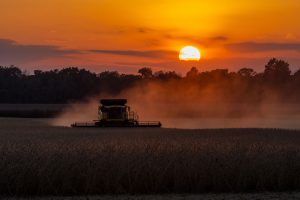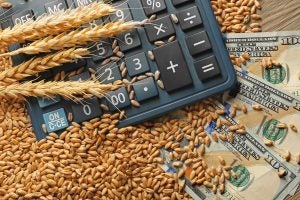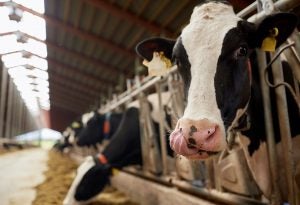British author Charles Dickens would certainly make hay with the topic of ag-politics in the U.S. Presidential election of 2020, as it certainly is a tale of two farmers. The Biggs and the Smalls could be the farmers’ names, and as it stands, they could even own fields facing each other on either side of a gravel road. But there’s no question that the actual individuals themselves would live in different homes in different towns, as this election, in terms of agricultural issues, is as much one of place as it is of size.
But whether they favor incumbent Republican President Donald Trump, or his Democratic Party rival, former Vice President Joe Biden, many in the field find themselves at a logger-heads over what it means to be in the business of farming, and which candidate will help them where they are. The boil down seems to be the choice as one between Trump’s support for larger ag-industry, as opposed to Biden who brings more focus to smaller, more organic-style operations, and heavily emphasizes environmental and climate-change concerns. Direct statements from Biden include those planning to increase loan programs for younger Americans wishing to get into the farming business, while Trump’s tax policy is explicitly designed to keep families on the farms they already own.
Meanwhile, there’s no question when it comes to the Electoral College map that, once again, the rural ag-states will determine the election’s outcome. With that in mind, the American Farm Bureau Federation secured on behalf of the country an extensive 12-question interview with both campaigns, allowing each to answer in writing. The 12-question interview might be one of the few exchanges in writing the two sides have taken this election to outline their agribusiness proposals, and those for rural America in general, covering the topics: Food system resilience; farm policy programs; international trade; tax policy; energy; regulatory reform; endangered species act; clean water; biotechnology; rural life and health; agricultural labor; and sustainability and climate change.

Why Size Matters
The battle between the Biggs and Smalls is as old as the business of agriculture, and producers across the country have observed its impact, not just over the last four years, but perhaps over the past 40. Meanwhile, smaller dairy farmers in particular have reported being struck particularly hard by not only trade tariffs with China and Mexico but, in 2020, by a COVID-19 pandemic that disrupted supply chains to schools and restaurants to the point where they were actually dumping milk during the spring. But complaints from smaller producers of all food items actually go back to the onset, as many noted their margins and volumes just weren’t sufficient to keep up. That said, the Trump administration’s farm subsidies have climbed from $11.5 billion in 2017 to $32 billion in 2020, which supports the Republicans’ assertion that they’re helping farmers.
But what kind of farmers, and how would each candidate continue to support the nation’s agricultural system’s resiliency?
Biden directly addresses this question throughout his interview and points to smaller operations in his materials, with a recurring theme made by statements such as:
“A Biden-Harris Administration will ensure the U.S. Department of Agriculture ends historical discrimination against Black farmers in federal farm programs and that all socially disadvantaged farmers and ranchers have access to programs that support their family farms. And we will strengthen antitrust enforcement, including in the farm and food production industry. Americans are hurt by increasing market concentration in the food industry. The Biden-Harris Administration will protect small and medium-sized farmers and producers by strengthening enforcement of the Sherman and Clayton Antitrust Acts and the Packers and Stockyards Act.”
Trump’s answers to the same question do tend toward a more system-wide, or corporate-friendly approach, and in reference to the economic impact of COVID on farming, said:
“On April 28th, the Trump/Pence administration issued an executive order that deployed the Defense Production Act for our meat packing industry. This act made it clear meatpacking plants that met OSHA and CDC guidelines should remain open. It was critical that we kept meat in our grocery stores during this national crisis, and it was critical for our farmers and ranchers that these facilities remained opened to process animals that were ready for market. There were many stories in the spring about worst case scenarios in the meat and poultry sectors, and while these were trying times, through strong and clear actions we were able to quickly work to stabilize the meat production sector.”

Trade, Taxes, and Technology
Both candidates acknowledge that trade deals are fundamental to the discussion of all things agricultural in America. Taxes and technology are likewise a key to all elements of any business. Their approach can be boiled down to Trump’s desire to maintain the same course plotted four years ago at the onset of his administration, with Biden arguing a new series of discussions, primarily with China, are needed.
As Biden states:
“We also will strengthen our agricultural sector by pursuing a trade policy that works for American farmers. More than 20% of all crops grown and products raised in the United States are exported, supporting hundreds of thousands of jobs and helping to stabilize farm income. But America’s farmers and rural communities have paid a heavy price for President Trump’s tariffs. While Trump is pursuing a damaging and erratic trade war without any real strategy, we will stand up to China by working with our allies to negotiate from the strongest possible position. More information on what our administration’s trade policy will be can be found in the next section on international trade. A Biden-Harris Administration will support beginning farmers.”
Biden also keys in the goal of helping small farmers get bigger, and new entrepreneurs, stating:
“America tries to make it easy to start a business, but unless you inherit the land, it’s much more difficult to start a farm. We will expand the Obama-Biden Administration’s microloan program for new and beginning farmers, doubling the maximum loan amount to $100,000. And, it will increase funding for the U.S. Department of Agriculture’s farm ownership and operating loans that typically serve beginning farmers who grew up on a family farm but need low-cost capital to add to their family’s operation to support another household. We will reinvest in land grant universities’ agricultural research so the public, not private companies, owns patents to agricultural advances.”
Meanwhile, Trump pledges to continue battling China by way of trade, and to continue supporting the ag-industry as it stands. The same principles hold true in terms of tax policy.
“One of the most important achievements of my first term was to gain passage of the most significant tax reform in our nation’s history. Both corporate and individual rates were reduced, capital gains tax were significantly reduced, and the death tax burden, which directly hits our family farms across the U.S., were significantly reduced by raising the exemption level and addressing the stepped-up basis. These tax cuts have unleashed the strength of our farm economy, allowing farmers to have certainty about future generations, and allowing farmers to invest more of their revenue back into their businesses and communities. We already know that a Biden Administration will work to raise taxes from day one. To make matters worse, because of the capital intensive nature of farming, these tax increases could have an even greater negative impact on farmers and ranchers if they are unable to make important investments in land, equipment, and inputs necessary to generate such abundant results.”
Does raising taxes on the Biggs to help the Smalls threaten the Biggs? The answer to that question may very well explain your vote this year.

Where Do You Stand?
Reading the Farm Bureau Federation’s in-depth Q&A in full is requisite for a solid understanding of the two candidates’ proposed ag policy, as stark differences are evident from beginning to finish. Where the Biden campaign seeks a hard drive to renewable energy by way of subsidies and regulations, Trump plans to cut the same. To say there is one solid ag-answer to the U.S. Presidential Election of 2020 is simply too broad a generalization. The answer of which group is best for you really depends on Biggs and Smalls, and where your positions are going forward.
Brian Boyce is an award-winning writer living on a farm in west-central Indiana. You can see more of his work at www.boycegroupinc.com.
Become an ag insider with AGDAILY!
We deliver quality over quantity. Sign up here!



